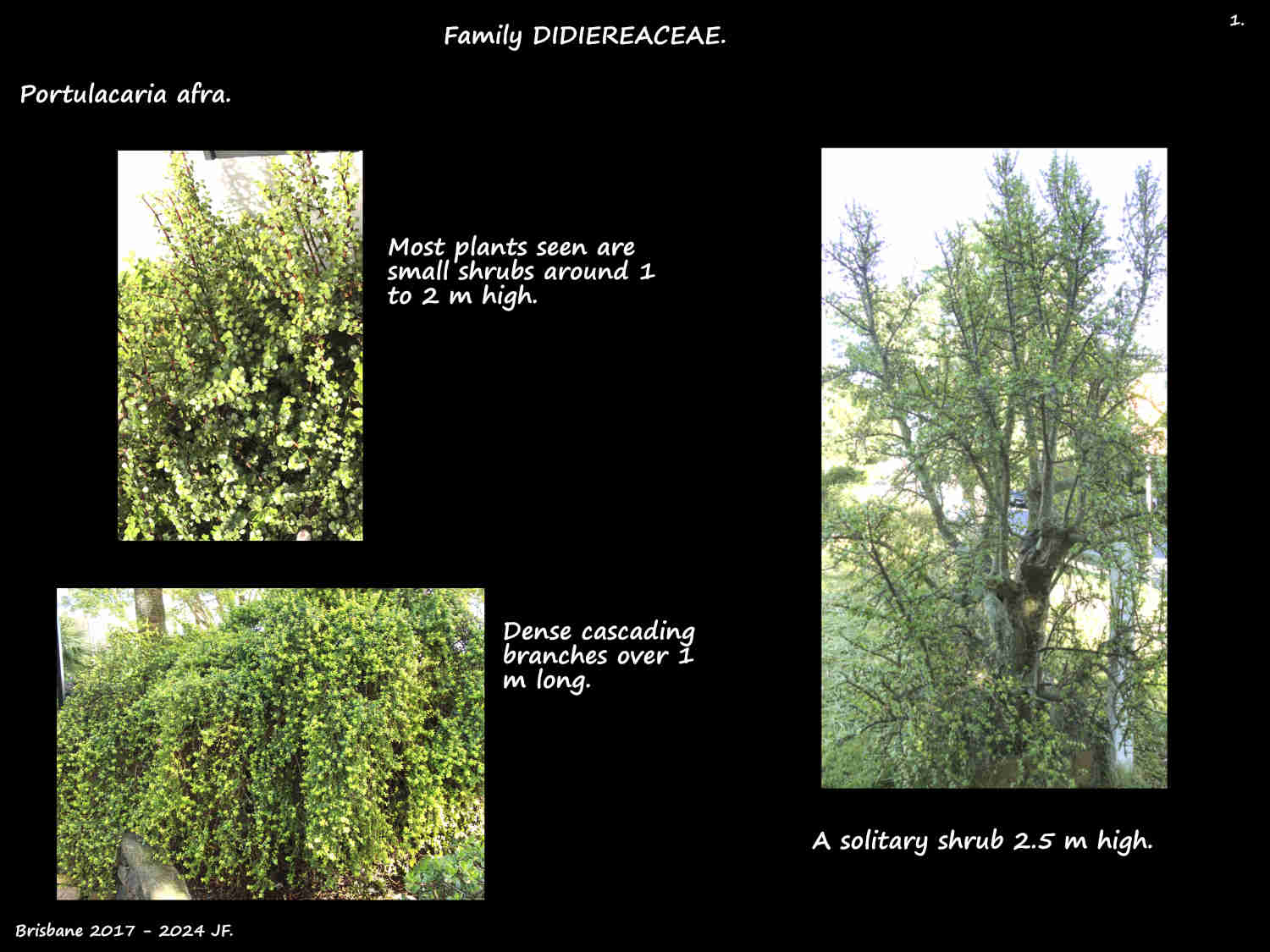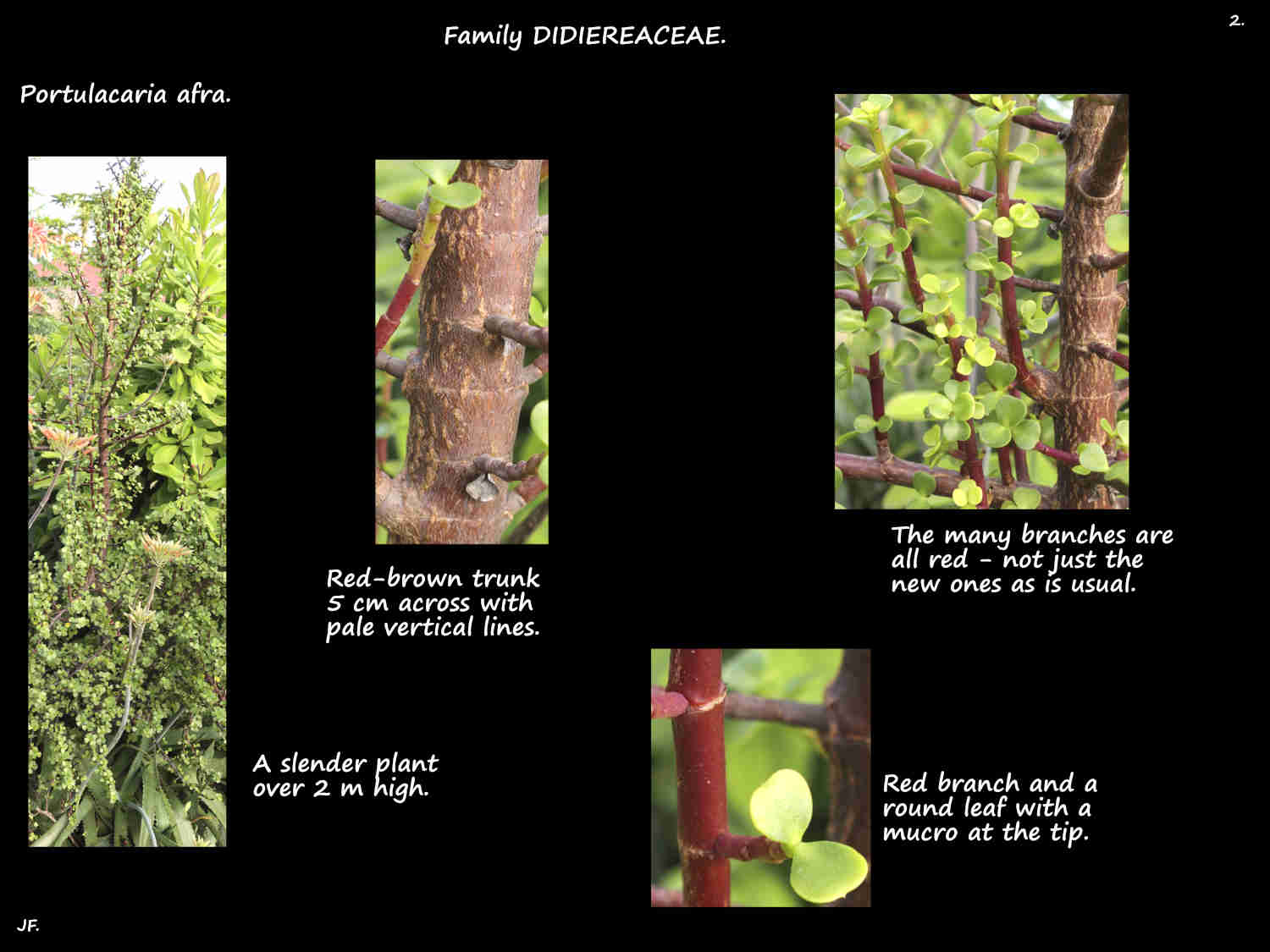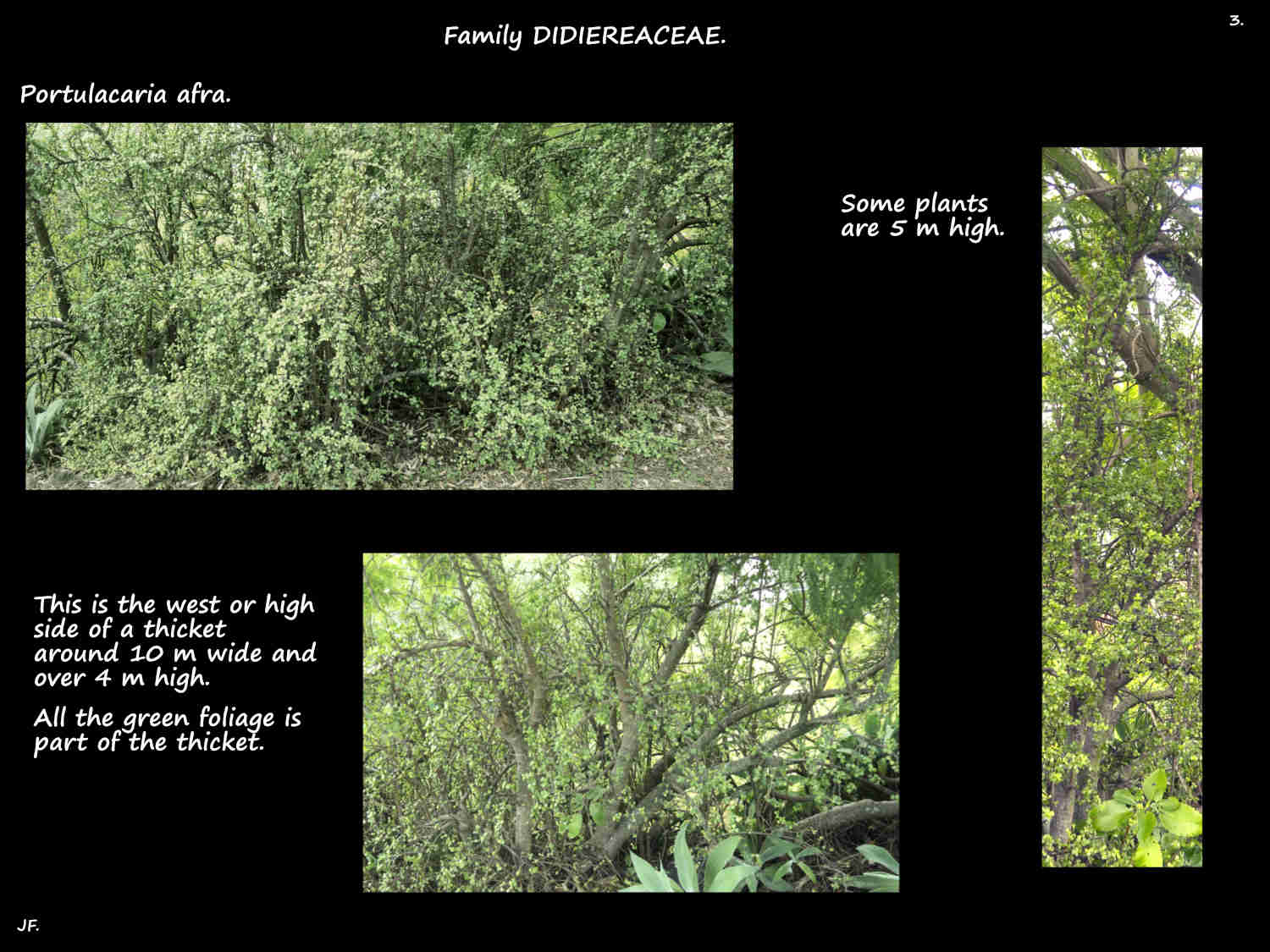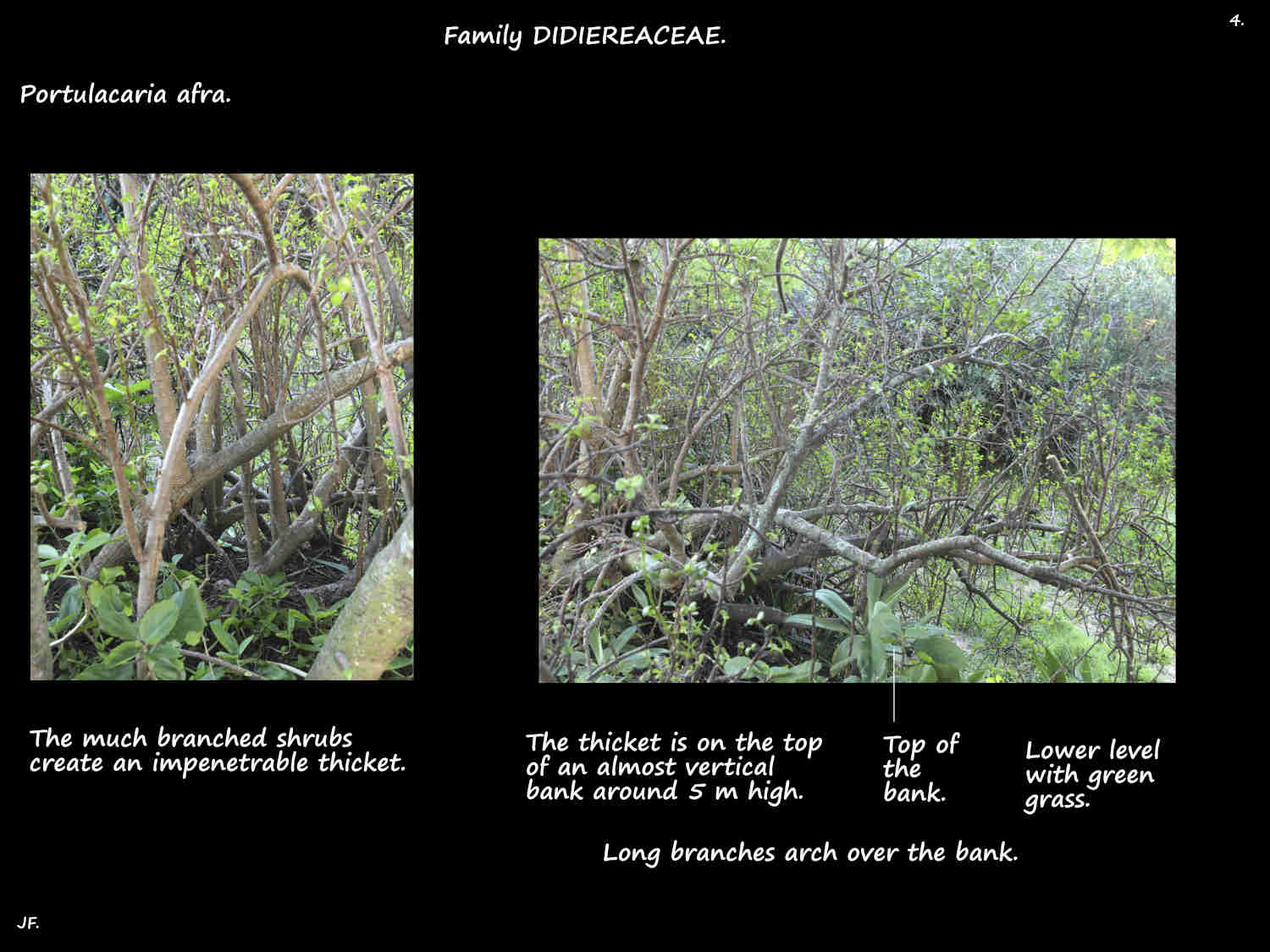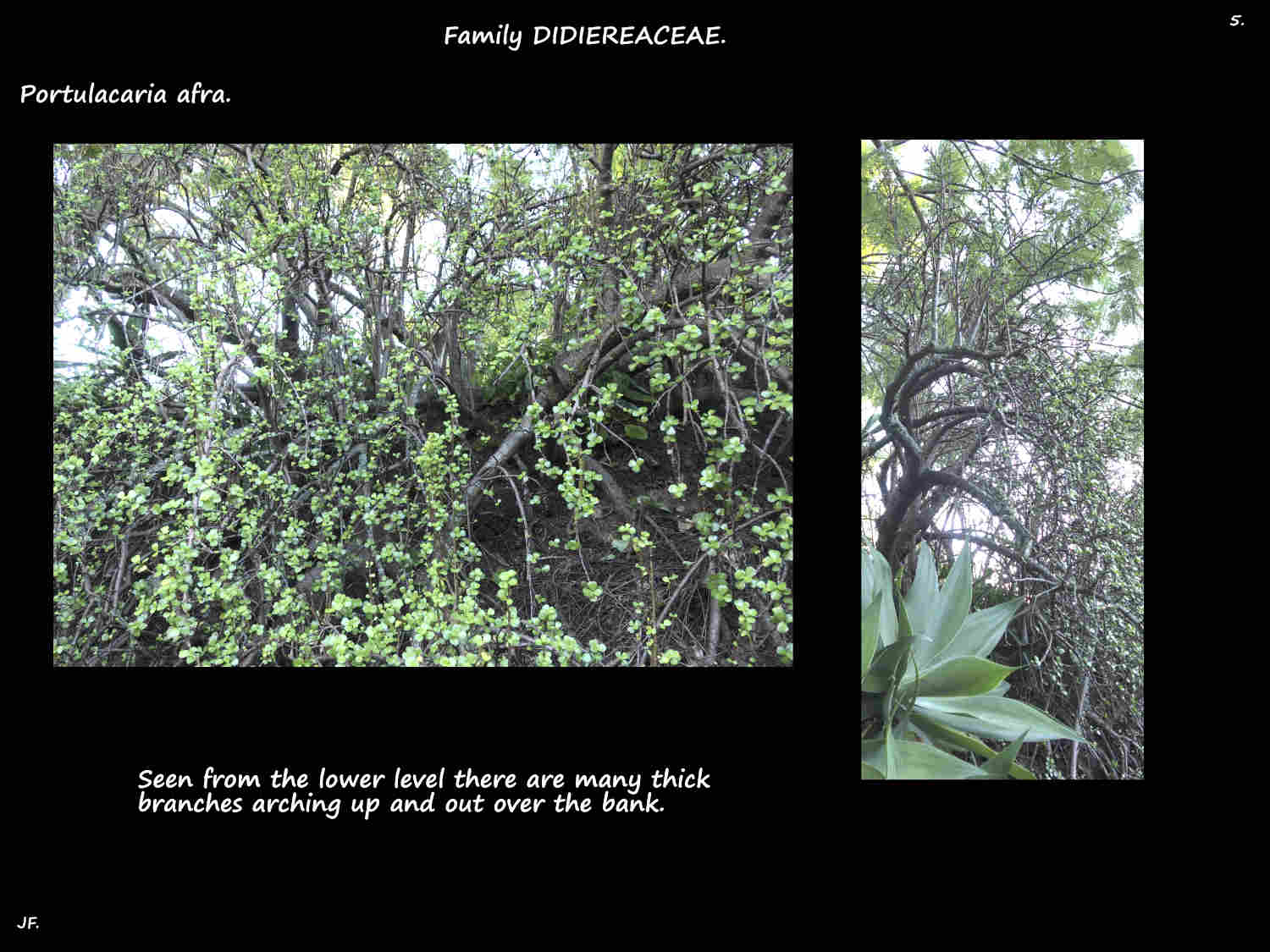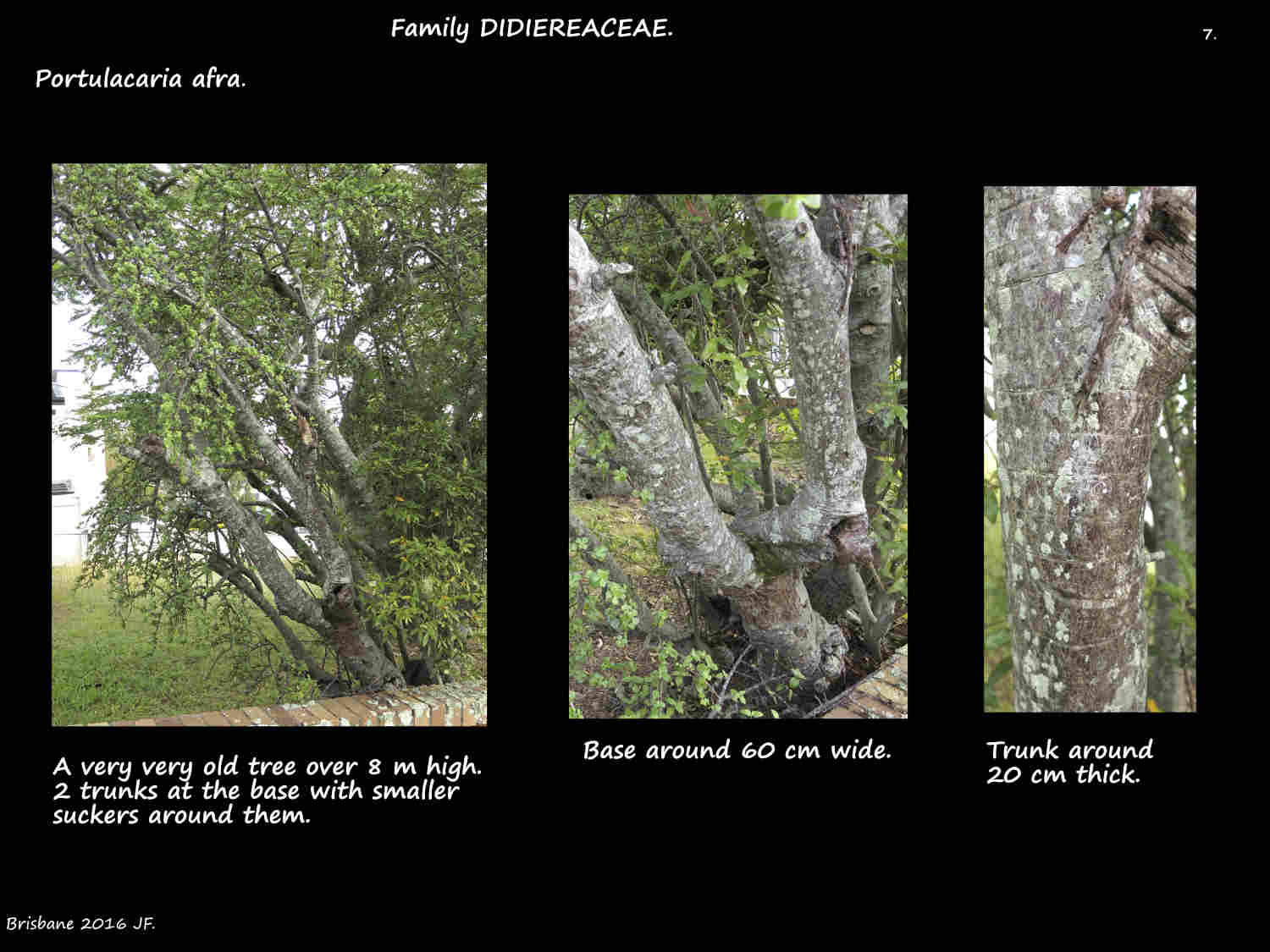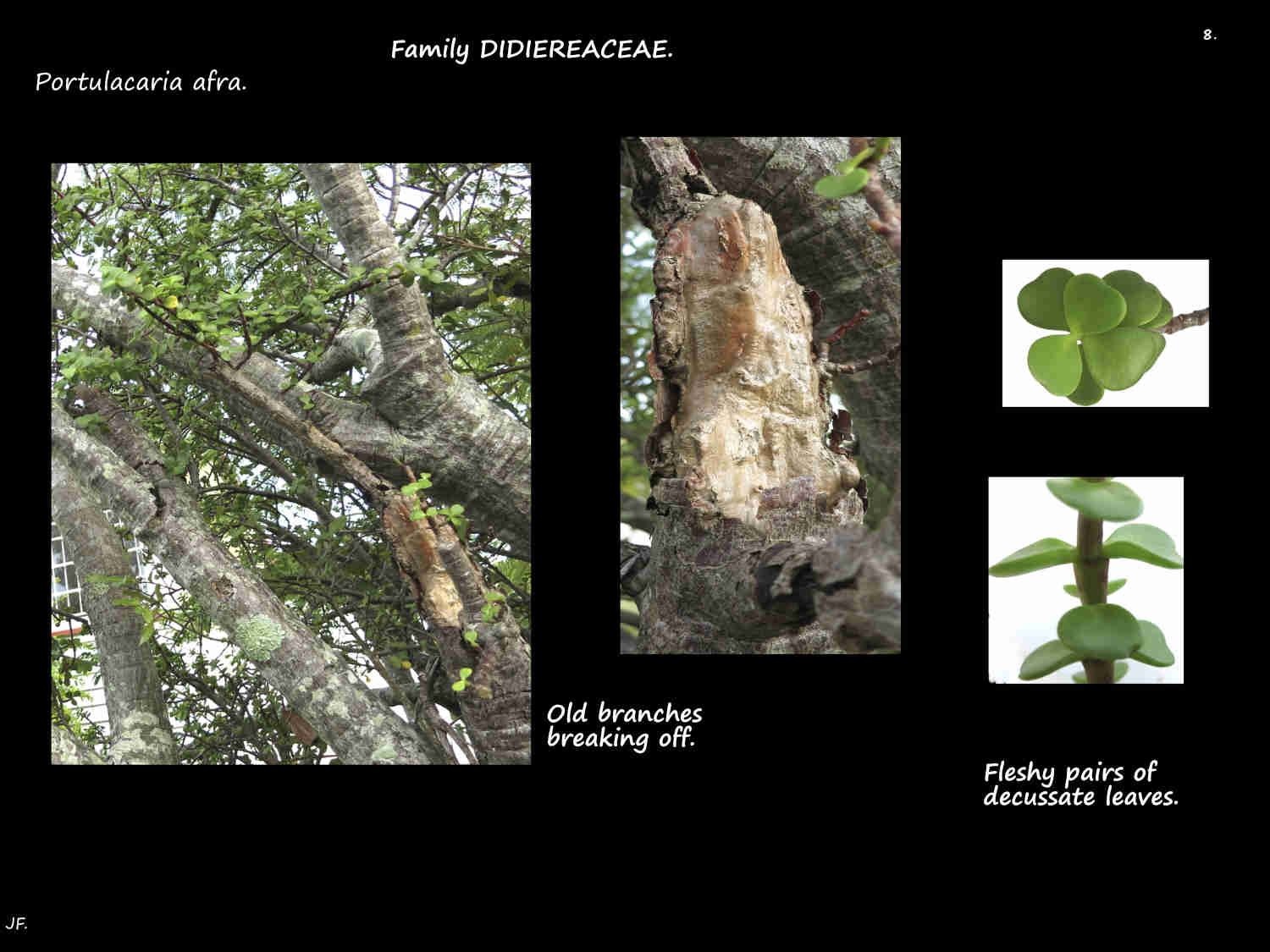Portulacaria afra.
Family Didiereaceae (Portulacaceae) > Subfamily Portulacarioideae > Genus Portulacaria.
It is commonly known as Elephant Bush, Dwarf Jade or Small Leaf Jade.
Synonyms, in addition to Portulaca fruiticosa include Crassula portulacaria and Crassula portulacastrum.
Some species resemble Crassula species (especially C. ovata).
Their form is very variable depending on the surroundings, climate etc.
Seen in old gardens they are usually large shrubs up to 2 or 3 m high.
In the wild they can be erect, weeping or cascading shrubs to large trees.
Large specimens can be 15 m high with a spread of 3 to 4 m and a trunk over 20 cm thick.
The longest unbranched stems can be up to 3 m long and old ones can droop or trail on the ground.
Propagation is mainly from fallen stems as they root easily.
Dense thickets, covering very large areas form in the wild.
The dense branches, despite a thin woody core are brittle and break easily from the weight of the leaves.
Young branches have reddish-brown bark, older ones have grey-brown bark that flakes.
The plants can live for over 50 years.
The fleshy leaves are opposite and in 4 ranks (decussate) although at the end of some branches the pairs can be in a spiral.
They have no distinct petiole (some old leaves may have a 2 to 3 mm one).
Most leaves are under 1.3 cm long with occasional ones nearly 3 cm.
Flat blades, up to 3.5 mm thick are round with older ones occasionally obovate.
There may be a faint cleft/furrow down the centre of the leaf.
Young leaves have a mucro (tiny point) at the tip and the edge may be slightly reddish.
There are no visible veins but many small pores.
Pale green new leaves become darker then eventually greyish.
Flowers, in branched terminal inflorescences are rarely seen in cultivation.
Each cluster of flowers is up to around 7.5 cm long with the lower flowers opening first.
Star-shaped flowers, on a short pedicel (stalk) are up to 2.5 mm long.
There are 2 sepals which become papery and persist on the fruit.
The short corolla tube has 4 or 5 pointed lobes.
Petals are pale pink to mauve although white forms are said to occur.
There are 4 to 7 prominent stamens and nectaries that produce a lot of nectar.
The superior ovary, with one locule has 3 stigmas.
The ovary is 3-angled with reddish wings on the angles.
The upper section has dense tiny sharp projections.
The 3-winged translucent or pinkish fruit, up to 5 mm long have 1 seed.
There are numerous varieties including plants with larger, smaller or variously variegated leaves.
There are also dwarf and prostrate forms.
J.F.

